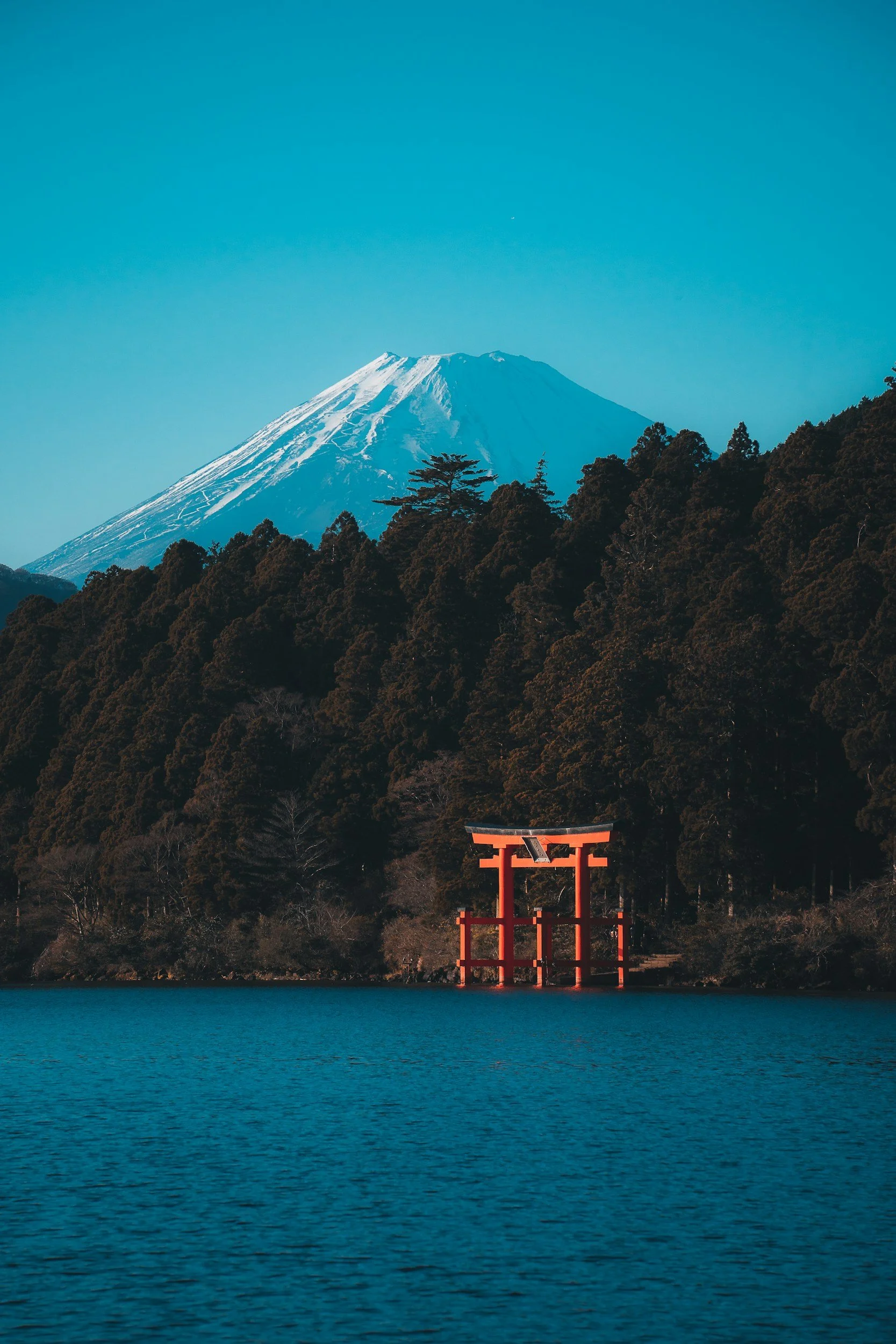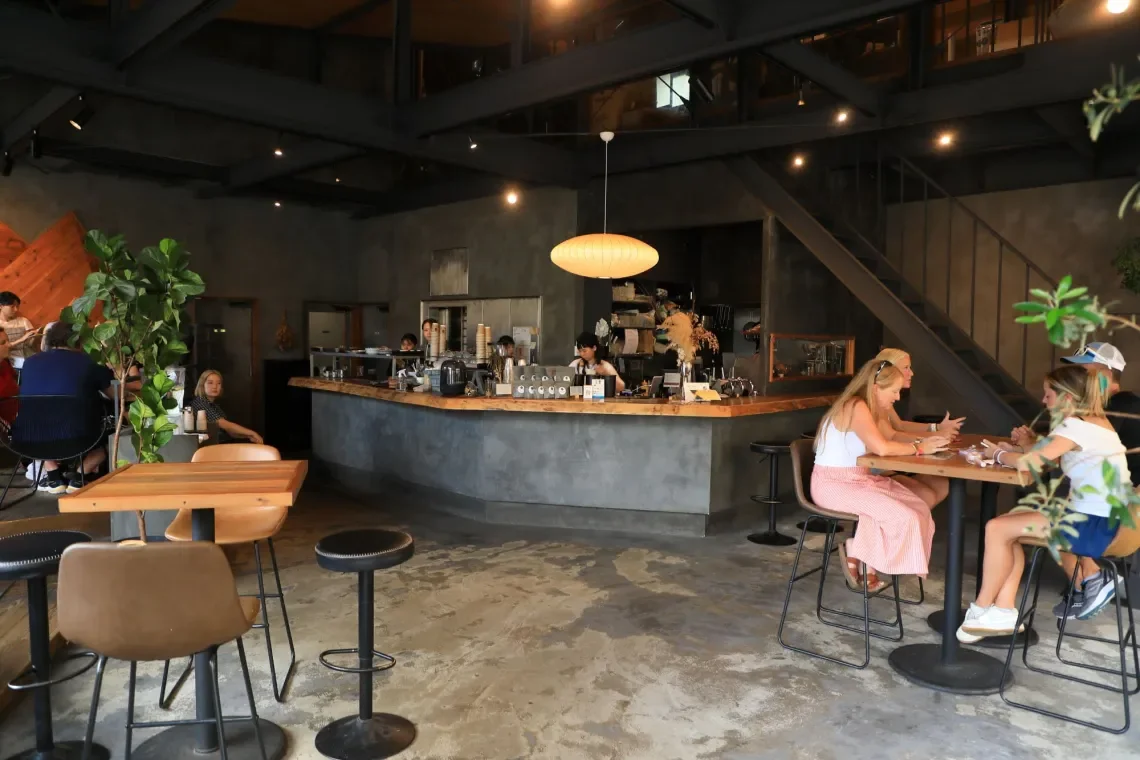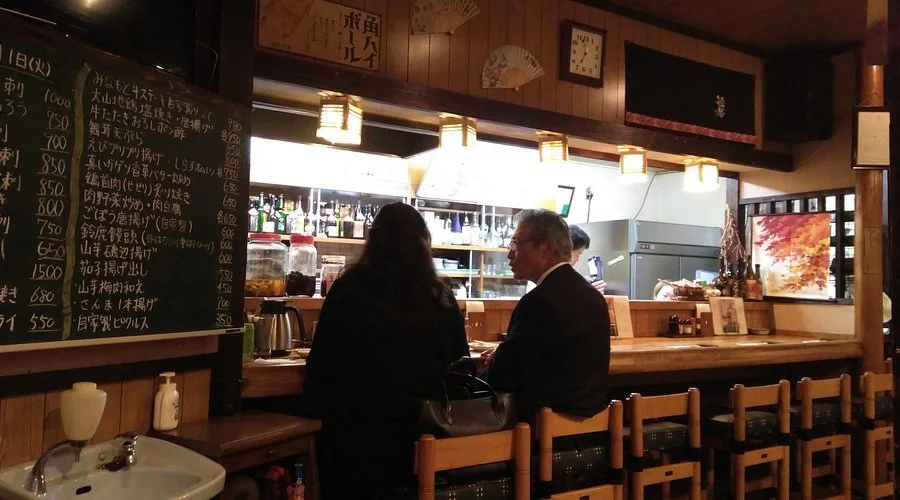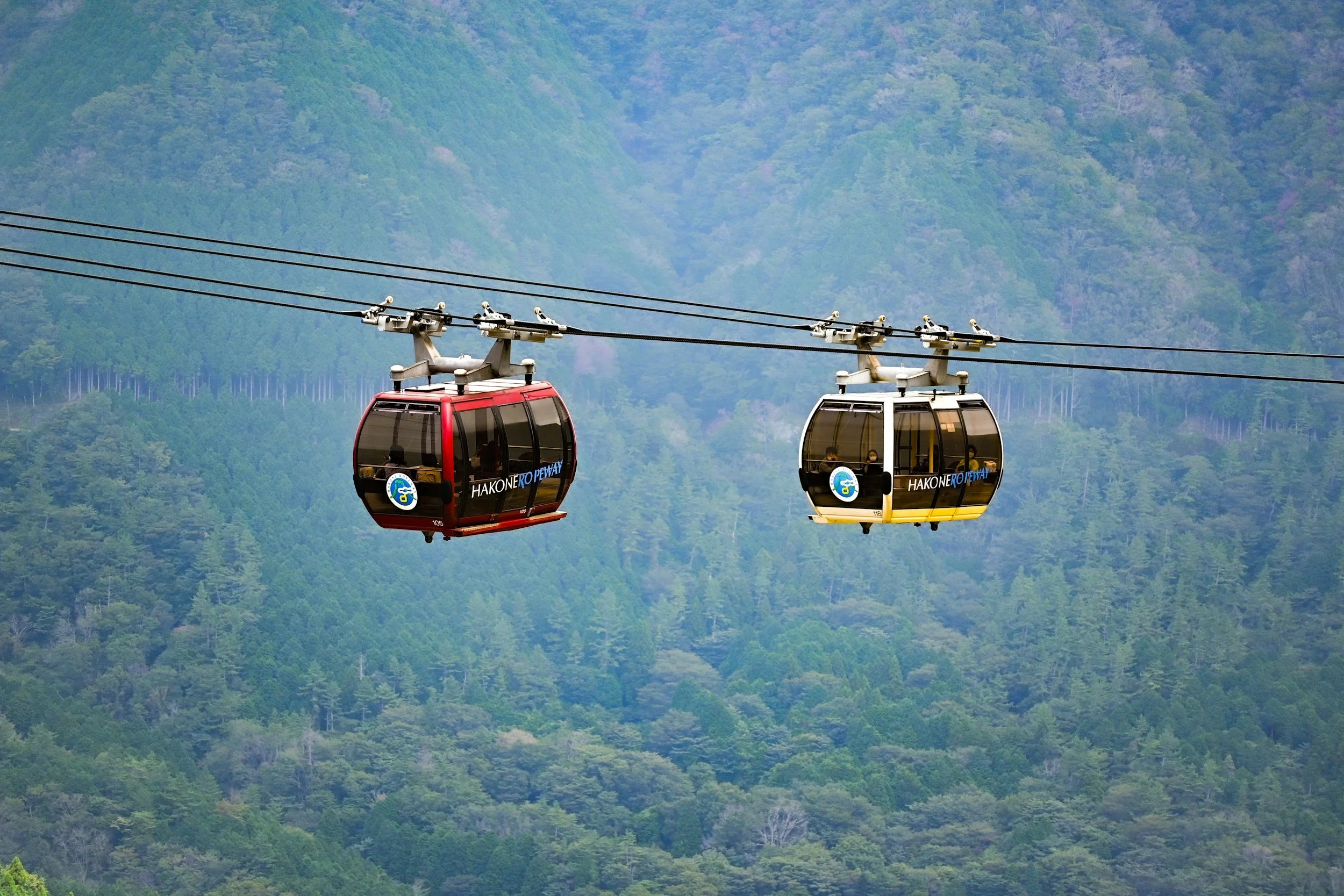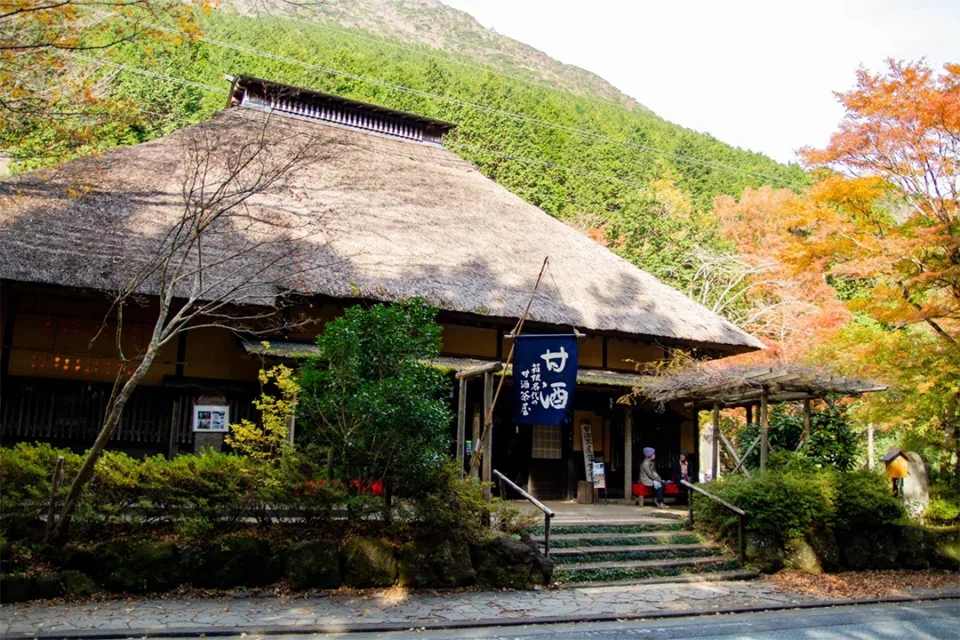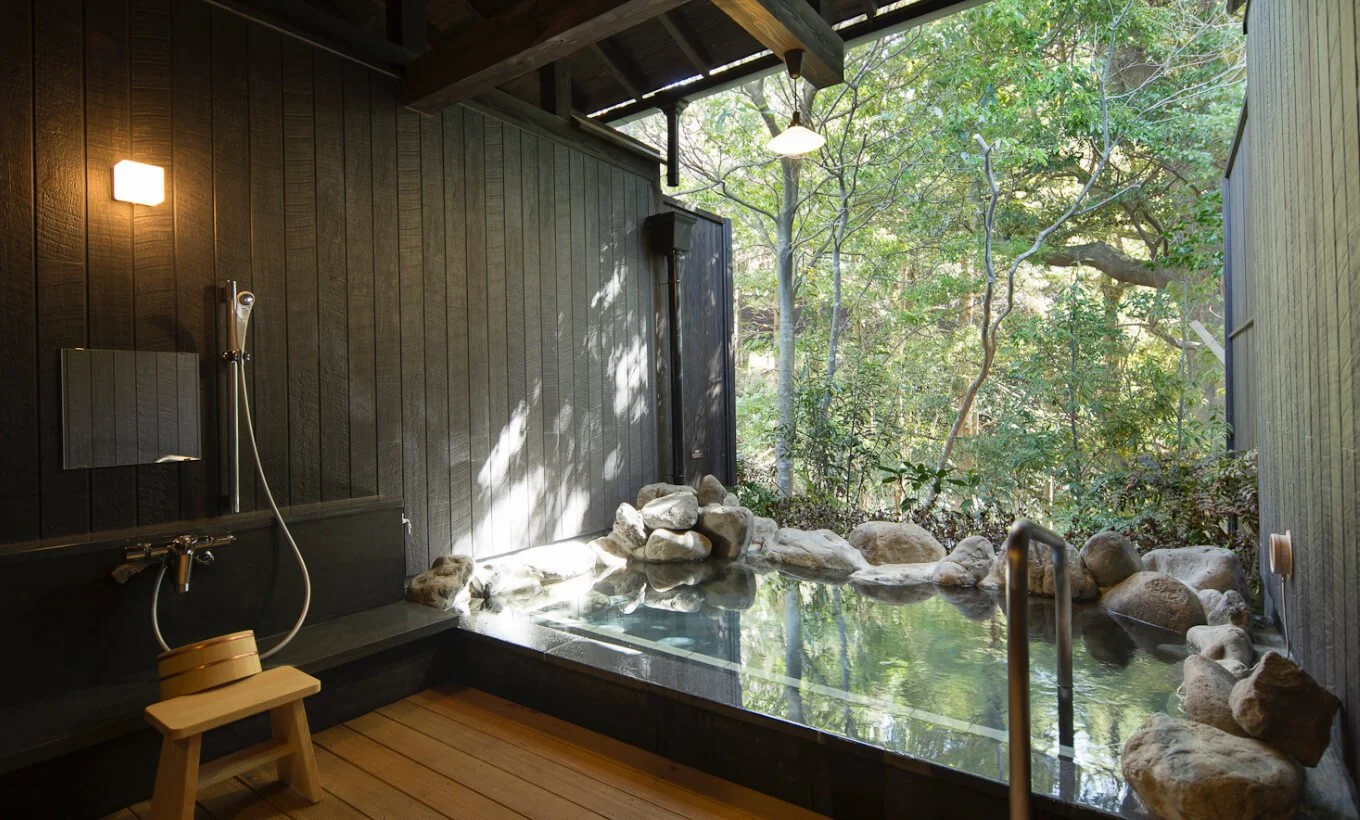Hakone
Hakone, a charming town nestled in the Fuji-Hakone-Izu National Park, has been a beloved retreat since the Edo period. Historically, it served as a vital checkpoint on the Tōkaidō Road, the route connecting Tokyo and Kyoto, allowing travellers to rest and regroup. Its reputation for natural hot springs, or onsen, dates back centuries, drawing visitors seeking relaxation and healing properties.
Today, people flock to Hakone for its stunning views of Mount Fuji, serene lakes, and lush forests. The town offers a delightful blend of cultural heritage and natural beauty, with attractions like the Hakone Shrine, the open air art museums, and the iconic Hakone Ropeway. The geothermal activity fuels numerous onsens that provide a quintessential Japanese experience.
Including Hakone in any Japanese itinerary is a no brainer. It offers a peaceful contrast to the bustle of Tokyo, a chance to soak in therapeutic hot springs, and a wealth of outdoor and cultural adventures. Whether you’re after tranquillity, art, or epic views, Hakone packs a memorable punch that shows off Japan’s diverse charm.
Fast Tips
-
2025 - Stayed at the Hakoneji Kaiun for 2 nights.
-
The best way to get to Hakone, Japan, is to catch the shinkansen (bullet train) from Tokyo to Odawara Station, which takes about 35-40 minutes on the Kodama or Hikari service. From Odawara, switch to the Hakone Tozan Railway for a scenic 15-20 minute ride up into Hakone.
Alternatively, you can grab a direct bus from Shinjuku Station to Hakone, which takes roughly 2 hours, but the train route is faster and more picturesque.
-
When exploring Hakone, the best way to get around is by using the Hakone Free Pass. This handy ticket covers a variety of transport options including buses, trains, the scenic Hakone Tozan Railway, the cable car, and even the pirate ship on Lake Ashi. It’s not only cost-effective but also super convenient for hopping between the main sights without stress.
Buses fill in the gaps, darting around to places like the Hakone Open Air Museum and various onsen. The Free Pass lets you travel unlimited on these lines, so you’re free to explore at your own pace without faffin’ about buying tickets every time.
Pro tip: Start early to beat the crowds and make the most of daylight, plus a lot of Hakone depending on bus times takes longer to get around than expected.
-
Kaiseki Ryori: A traditional multi-course meal that showcases the seasonal ingredients of Hakone, emphasising local fish, vegetables, and meticulous presentation.
Onsen Tamago: Eggs slow-cooked in the natural hot springs of Hakone, resulting in a silky texture that's perfect for dipping in soy sauce or adding to rice.
Kuro Tamago (Black Eggs): Hard-boiled eggs cooked in the sulphuric hot springs of Owakudani that turn black on the outside and are said to add seven years to your life (I ate four just to make sure it worked).
Goya Tempura: Bitter melon tempura that provides a crunchy, slightly bitter bite, a beloved local snack or side dish in Hakone.
-
As a queer male I felt completely safe here. Japan is known for its safety and incredibly polite population so make sure to be respectful back.
-
I stayed 2 nights, but 3 nights is a better shout. As the Hakone Rail Loop takes a full day to complete, it’s great to have a second full day to explore the surrounding of the town and enjoy multiple onsens.
-
Common to find traditional ryokans with tatami mats and onsen baths for a truly Japanese experience, cosy guesthouses perfect for backpackers, mid-range hotels offering modern comforts, and luxury resorts with stunning views of Mt. Fuji.
My stay at Hakoneji Kaiun was wonderful and had one of the loveliest rooftop onsens and beautiful picturesque views or the surrounding nature. It was a ryokan so slept on tatami mats and they were very comfortable.
-
Check out below in the sees but also the Hakone official website is a great source for ideas.
Eats, Sips & See
COFFEE CAMP
This modern cafe is situated in Gora so it’s the perfect spot to pass through before jumping on the cable car or heading to the Open Air Museum. The food is simple, but I recommend the the double egg number that has a really interest salt and vinegar like flavour to it.
HAKONE OPEN AIR MUSEUM
If there is anything you do in Hakone it is this. This museum is way more wonderful than you can imagine, and you could lost here for hours quite easily. Situated on the rolling hills, art and museum melds into nature and becomes one and it’s as relaxing as it is fascnitaing.
SUZUKA
This small but mighty izakaya is conveniently located in the town and has bigger menu, with a focus on sashimi and fried bits. The karaage chicken is incredible, and the sashimi is a must do. It does get busy, but you are always welcome to wait for a spot and it will come up quick enough.
HAKONE LOOP
The Hakone Loop is a scenic circuit in Japan’s Hakone region, popular for its stunning views of Mount Fuji and Lake Ashi. It combines a variety of transport modes including a pirate ship cruise on Lake Ashi, a ropeway ride over volcanic valleys, and a scenic bus trip. Little tip, do it backwards starting with pirate ship along Lake Ashi and beat the crowds and line waiting who go the more logical way.
AMAZAKE TEA HOUSE
Founded over 400 years ago, this tea house focuses on hand made mochi and of course the non alcoholic amzake (a sweet rice beverage). It’s a great final stop after completing the Hakone loop as it’s easily located at a bus stop along the K bus route but to Hakone centre.
HAKONE YURYO ONSEN
If you love an onsen like I do, this is the one to pop into. Beautiful and relaxing, nestled into nature as well. Of course follow the rules, be respectful and enjoy the freedom of being naked. Note I have two small tattoos and didn’t have an issue getting in but just incase bring some tape to cover.
*media & images courtesy of publications, establishment websites and social media pages as well as Tripadvisor. I do not claim to own some of the images provided.
